
Roots
The air around us, a silent, shifting presence, carries with it an unseen architect of change ❉ humidity. For those of us with coils, kinks, and waves, this atmospheric moisture often commands our daily conversations about hair, conjuring images of swelling strands or flattened definitions. Yet, the conversation often stops at the visible, the aesthetic. We seldom pause to consider the deeper, unseen theatre unfolding upon our scalps, a delicate microbial ecosystem that responds to every subtle shift in its environment.
How does this pervasive moisture truly interact with the living landscape of our scalp, shaping the microscopic inhabitants that call it home? This initial exploration invites us to look beyond the obvious, to consider the very foundations of scalp health, a vibrant community of bacteria and fungi that live in a dynamic, often surprising, balance.
Understanding the scalp’s microbial balance requires a gentle journey into its foundational biology. Our scalp is not merely a surface for hair to grow; it is a complex organ, rich with sebaceous glands, sweat glands, and hair follicles, all providing a unique habitat. This environment, in turn, hosts a diverse array of microorganisms, collectively known as the scalp microbiome.
Think of it as a microscopic garden, where different species of bacteria and fungi coexist, some beneficial, some opportunistic, all striving for equilibrium. The health of this garden directly impacts the vitality of our hair, influencing everything from comfort to growth.
The scalp is a complex biological landscape, hosting a diverse microbial community that influences hair health.

The Scalp’s Living Surface
The scalp’s surface, while appearing uniform, presents a mosaic of micro-environments. Areas around hair follicles, rich in sebum, differ markedly from drier regions between them. Each niche offers distinct conditions, favoring particular microbial residents.
The stratum corneum, the outermost layer of skin, provides a protective barrier, yet its integrity can be influenced by external factors, including the very moisture we are discussing. When this barrier is compromised, even subtly, it can alter the microbial dynamics, creating opportunities for certain populations to flourish or recede.
Consider the skin’s pH, a measure of its acidity or alkalinity, which typically hovers around 4.5 to 5.5, slightly acidic. This acidic mantle acts as a natural defense, discouraging the unchecked growth of many pathogenic microorganisms. Sebum, the oily substance secreted by sebaceous glands, plays a dual role ❉ it moisturizes the scalp and hair, yet also serves as a nutrient source for certain microbes, especially lipophilic (fat-loving) fungi like those within the Malassezia genus. Sweat, composed primarily of water and salts, contributes to the scalp’s hydration levels and can alter its pH, further influencing the microbial habitat.

Microbial Residents of the Scalp
The scalp’s microbial community is predominantly composed of two main groups ❉ bacteria and fungi.
- Bacteria ❉ Among the most prevalent bacterial genera are Cutibacterium (formerly Propionibacterium), particularly Cutibacterium acnes, which resides deep within hair follicles and feeds on sebum. Staphylococcus species are also common, often found on the skin surface. The balance between these bacterial groups is crucial for preventing conditions like folliculitis or certain forms of dermatitis.
- Fungi ❉ The dominant fungal inhabitants belong to the genus Malassezia. These yeasts are lipophilic, meaning they thrive on lipids (fats) found in sebum. While a normal part of the scalp flora, an overgrowth of certain Malassezia species, such as Malassezia globosa or Malassezia restricta, is strongly associated with common scalp concerns like dandruff and seborrheic dermatitis.
The interaction between these microbial groups, alongside the scalp’s own physiological responses, establishes a delicate ecosystem. Disruptions to this balance, whether from internal factors like hormone fluctuations or external influences like product choices and environmental conditions, can shift the microbial landscape, sometimes leading to visible scalp issues.

Humidity as an Environmental Catalyst
Humidity, the amount of water vapor in the air, acts as a powerful environmental catalyst for the scalp’s microbial community. High humidity introduces more moisture to the scalp surface, directly impacting hydration levels of the skin and potentially altering the composition of sweat and sebum. This added moisture can create a more hospitable environment for certain microorganisms that prefer damp conditions.
Conversely, very low humidity can lead to scalp dryness, potentially compromising the skin barrier and making it more vulnerable to imbalances. The dynamic interplay between external humidity and the scalp’s internal moisture regulation mechanisms is a dance that directly influences the microbial inhabitants, dictating which populations might flourish and which might recede.
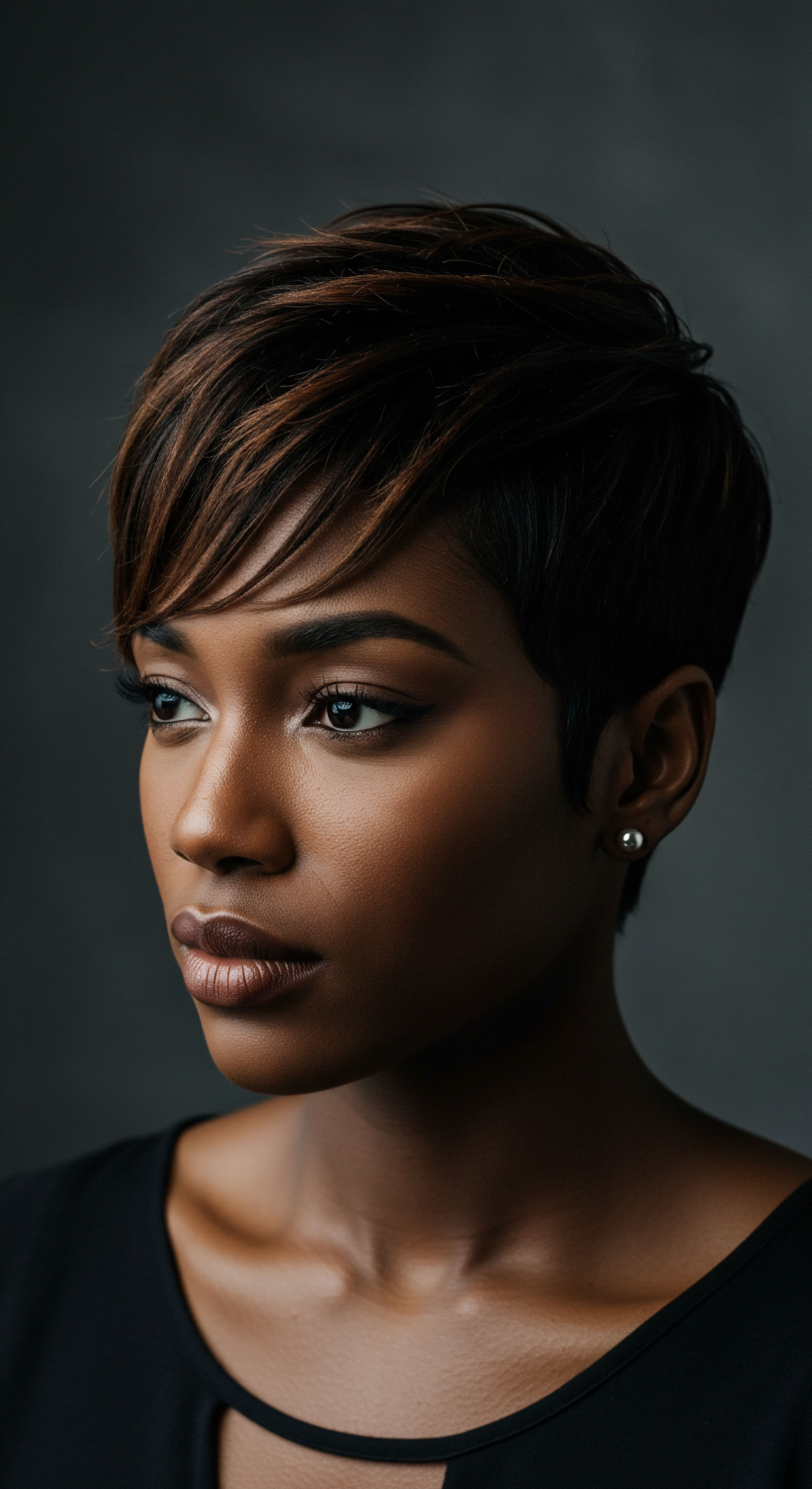
Ritual
Having explored the foundational elements of the scalp’s microbial life, we now turn our attention to the more tangible, yet equally profound, ways in which humidity interacts with our daily hair rituals. It is in the realm of our routines—the choices we make about cleansing, conditioning, and protecting our textured strands—that the invisible influence of atmospheric moisture truly manifests. This section seeks to bridge the gap between scientific understanding and lived experience, offering a practical wisdom that honors the unique needs of coils and kinks in the face of varying humidity levels. It is a contemplation of how our purposeful actions can either support or inadvertently disrupt the delicate microbial balance on our scalp, all while navigating the ever-present atmospheric conditions.
The impact of humidity on the scalp’s microbial balance is not a static phenomenon; rather, it is a dynamic process influenced by our daily and weekly hair care practices. Our cleansing routines, the products we select, and even our styling choices create a microclimate around the scalp that can either exacerbate or mitigate the effects of environmental moisture. For textured hair, which often requires specific moisture management strategies, these considerations become particularly pertinent.
Hair care rituals significantly influence the scalp’s microbial response to environmental humidity.

Cleansing and Its Moisture Connection
Cleansing is perhaps the most direct intervention we have on the scalp’s environment. When humidity is high, the scalp may feel more prone to sweat and oil accumulation, creating a warm, damp setting that certain microbes, especially yeasts like Malassezia, favor. If cleansing is not frequent enough, or if products leave behind residue, this can compound the issue, providing a richer nutrient base and a more prolonged moist environment for microbial proliferation. Conversely, over-cleansing or using harsh cleansers can strip the scalp of its natural oils, compromising the skin barrier and potentially leading to dryness and irritation, which can also disrupt the microbial equilibrium.
For textured hair, the balance is particularly delicate. Many individuals with coils and kinks opt for less frequent washing to preserve moisture and avoid excessive manipulation. This practice, while beneficial for hair strands, necessitates a mindful approach to scalp health, especially in humid climates. It means selecting cleansers that effectively remove buildup without stripping, and ensuring thorough rinsing to prevent product accumulation that could feed opportunistic microbes.

Conditioning and Scalp Microclimates
Conditioning treatments, vital for textured hair’s hydration and detangling, can also play a subtle role in scalp microbial balance. While conditioners are primarily for the hair shaft, some may inadvertently reach the scalp. Products that are heavy or difficult to rinse can create a film on the scalp, trapping moisture and potentially altering the pH or nutrient availability for microbes. In high humidity, this effect can be amplified, leading to a sensation of heaviness or even a slightly greasy feel on the scalp, which might signal a shift in the microbial community.
Deep conditioning treatments, often left on for extended periods, warrant particular attention. Ensuring these treatments are applied primarily to the hair and thoroughly rinsed from the scalp is crucial. The goal is to nourish the hair without inadvertently creating an overly occlusive or nutrient-rich environment on the scalp that could encourage the overgrowth of specific microbial species.

Protective Styles and Humidity Traps
Protective styles, such as braids, twists, and weaves, are cornerstones of textured hair care, promoting length retention and reducing daily manipulation. However, these styles can create unique microclimates close to the scalp. In humid conditions, the hair within these styles can absorb moisture from the air, and the scalp itself may sweat more, leading to a sustained damp environment underneath the style. This trapped humidity, combined with warmth, can become a breeding ground for certain bacteria and fungi if not properly managed.
For example, a study by Li et al. (2020) observed that higher humidity levels were associated with increased diversity of Malassezia species on the scalp. While increased diversity might not always signify dysbiosis, it certainly indicates a shift in the fungal landscape.
If certain Malassezia species thrive in these humid, occluded environments, it could contribute to issues like itching, flaking, or even scalp odor, particularly if the protective style is maintained for extended periods without proper cleansing and drying of the scalp underneath. This underscores the importance of mindful scalp care routines when wearing protective styles, ensuring the scalp is regularly cleansed and allowed to dry completely to prevent prolonged moisture retention.
| Humidity Level High Humidity |
| Scalp Environment Increased moisture, warmth, sweat. |
| Potential Microbial Shift Increased Malassezia diversity, potential bacterial overgrowth. |
| Care Considerations More frequent gentle cleansing, ensure thorough drying, avoid heavy products on scalp. |
| Humidity Level Low Humidity |
| Scalp Environment Dryness, compromised skin barrier, less sweat. |
| Potential Microbial Shift Reduced microbial diversity, potential for irritation/flaking. |
| Care Considerations Hydrating scalp treatments, gentle cleansing, barrier-supporting ingredients. |
| Humidity Level Understanding these dynamics guides thoughtful scalp care. |

How Do Styling Products Influence Microbial Balance?
The myriad of styling products available for textured hair, from gels and creams to butters and oils, also influence the scalp’s micro-environment. Products applied directly to the scalp, especially those with heavy occlusive ingredients like petrolatum or mineral oil, can create a barrier that traps heat and moisture, potentially altering the anaerobic/aerobic conditions and nutrient availability for microbes. In humid conditions, this effect can be intensified, leading to an environment that certain anaerobic bacteria might favor, or one that promotes the growth of lipophilic fungi by providing an abundance of lipids.
Water-based products, while generally lighter, can still contribute to prolonged dampness if not allowed to dry fully, particularly when layered or used in conjunction with occlusive styles. The goal is to select products that support hair health without creating an unintended breeding ground for microbial imbalance on the scalp. This often means choosing lighter formulations for the scalp, applying heavier products primarily to the hair shaft, and allowing sufficient air circulation to the scalp after product application.
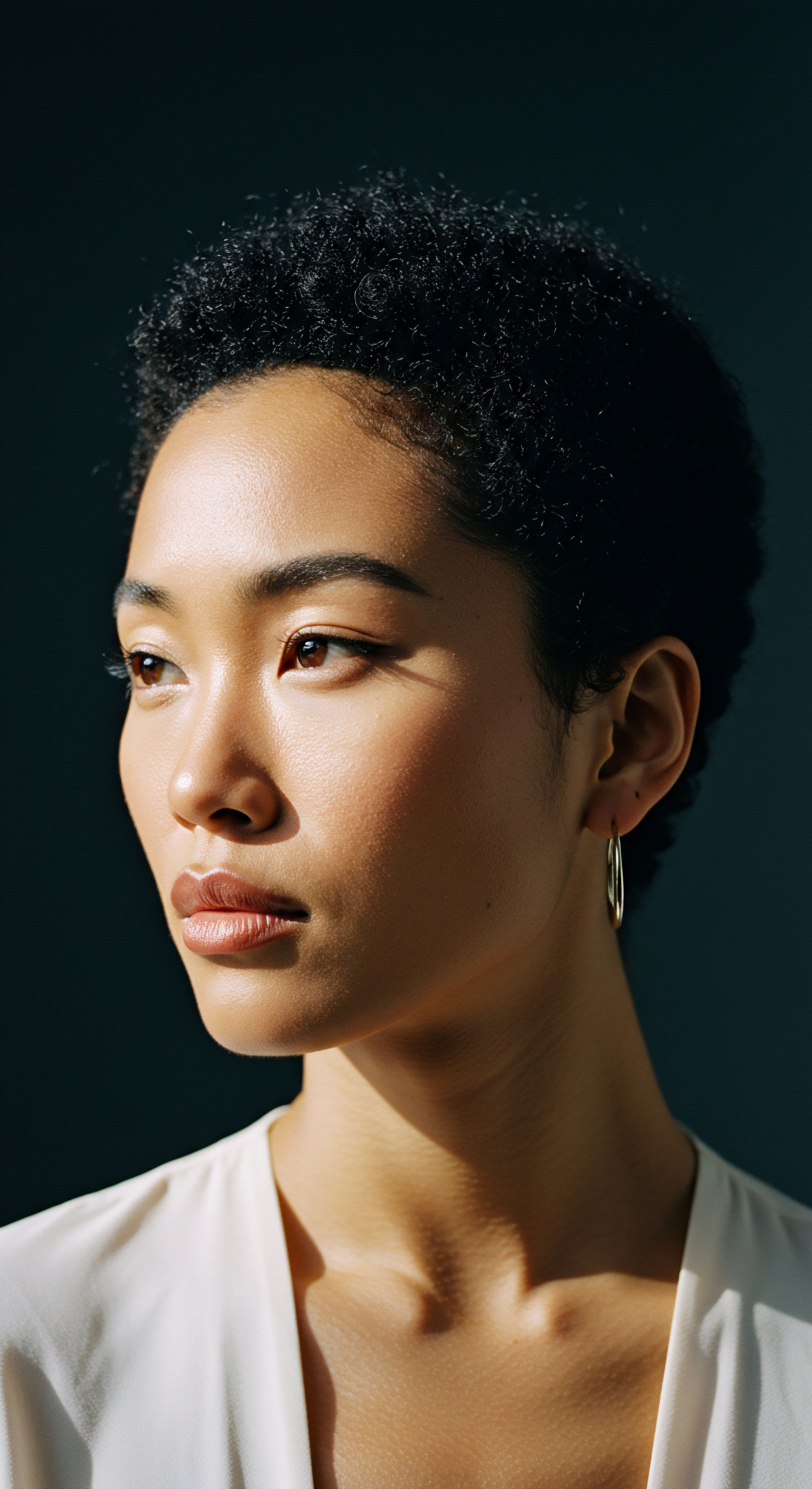
Does Product Buildup Affect Scalp Microbes?
Product buildup is a common concern for textured hair, and its influence on the scalp’s microbial balance, particularly in humid conditions, is noteworthy. Layers of styling products, dead skin cells, and environmental debris can accumulate on the scalp surface and around hair follicles. This buildup creates a physical barrier that can trap moisture and heat, establishing an ideal breeding ground for certain microorganisms. The ingredients within the products themselves can also serve as a nutrient source for these microbes.
For instance, some product ingredients might be metabolized by bacteria or fungi, leading to the production of byproducts that can cause irritation, itching, or odor. In a humid environment, this process can be accelerated, as the moisture provides a more favorable medium for microbial activity. Regular, effective, yet gentle cleansing becomes paramount to prevent this accumulation, ensuring the scalp remains a healthy, balanced habitat for its microbial residents, even when faced with the challenges of high humidity.

Relay
Stepping beyond the immediate impacts of humidity and our daily rituals, we arrive at a more sophisticated understanding of the scalp’s microbial balance—a realm where genetics, environmental pressures, and the deep currents of cultural practice converge. This section invites a deeper contemplation of how the intricate interplay of biological predispositions, the pervasive influence of atmospheric conditions, and the wisdom passed down through generations collectively sculpt the scalp’s microbial landscape. It is here that we truly appreciate the complex dance between internal biology and external reality, seeking to understand not just the ‘what’ but the profound ‘why’ behind the scalp’s response to humidity, particularly within the unique context of textured hair. This discussion aims to unravel the layers of complexity, drawing upon scientific insight and acknowledging the rich tapestry of human experience.
The scalp microbiome is a dynamic entity, its composition and activity influenced by a symphony of factors. While humidity is a significant environmental player, its effects are rarely isolated. They are relayed through the lens of individual physiology, genetic predispositions, and the broader context of lifestyle and cultural hair practices. For textured hair, this relay is particularly complex, as its unique structure and care regimens interact in specific ways with environmental moisture.
The scalp’s microbial balance is a complex interplay of humidity, genetics, and cultural practices.
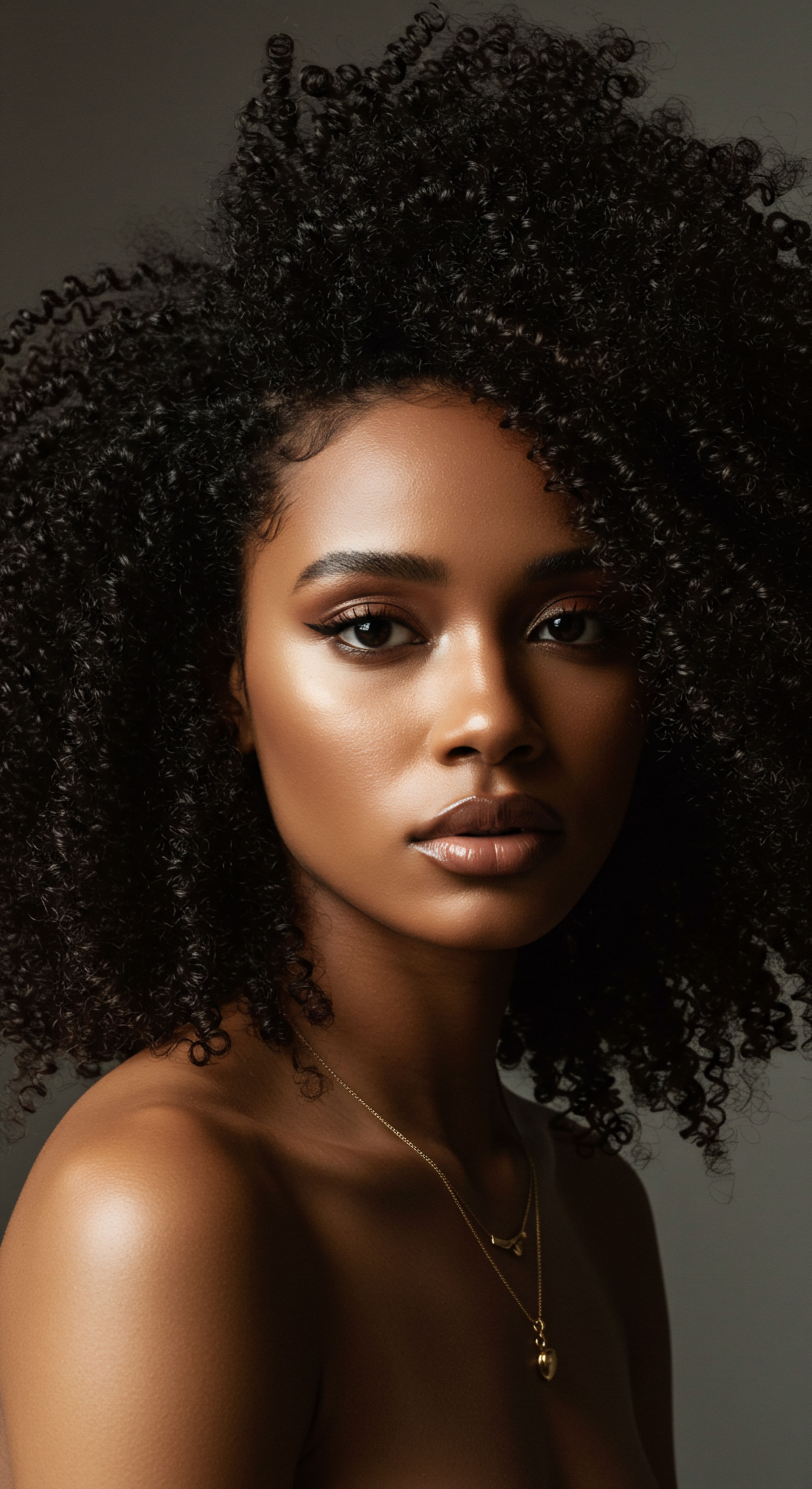
Genetic Predispositions and Scalp Physiology
Each individual’s scalp responds to humidity in a unique way, partly due to genetic predispositions influencing factors like sebum production, sweat gland activity, and skin barrier function. Some individuals naturally produce more sebum, providing a richer food source for lipophilic Malassezia yeasts, an effect that can be amplified in humid conditions. Others may have more active sweat glands, leading to a consistently damp scalp in high humidity, which can alter pH and favor bacterial growth.
The genetic blueprint also influences the skin barrier’s resilience. A robust barrier is better equipped to maintain hydration and resist external stressors, including excessive moisture. Conversely, a compromised barrier, perhaps due to genetic tendencies towards certain skin conditions, can be more susceptible to microbial imbalances when faced with fluctuating humidity levels. This means that while humidity presents a universal challenge, the scalp’s intrinsic physiological responses, shaped by our genetic heritage, dictate the specific microbial shifts that might occur.
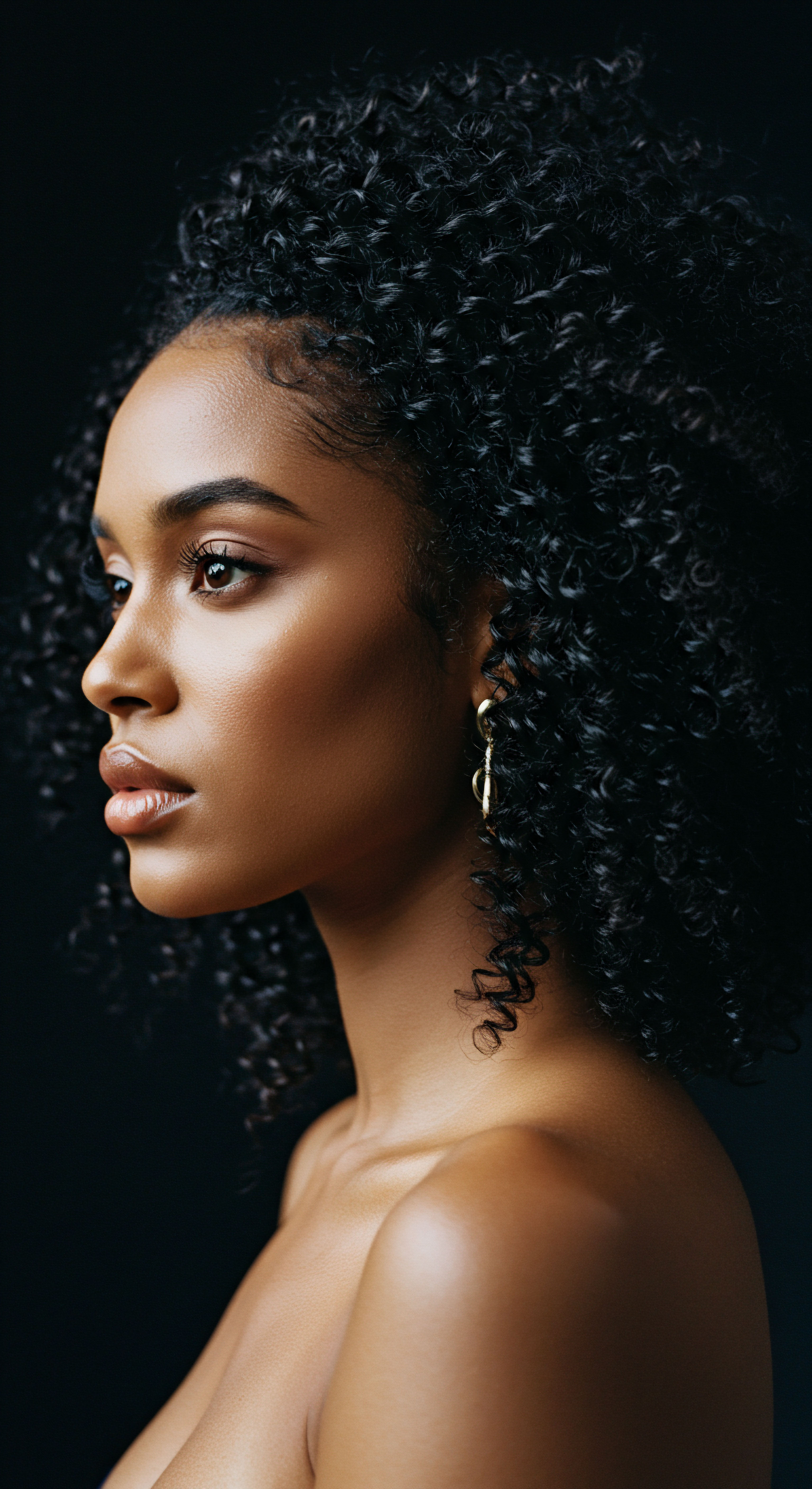
Cultural Hair Practices and Environmental Adaptation
Cultural hair practices, particularly prevalent within textured hair communities, represent generations of adaptive wisdom in managing hair and scalp in diverse environments. These practices, often passed down through families, include specific styling techniques, product preferences, and cleansing rhythms. Historically, many of these practices developed in climates with varying humidity levels, serving to protect the hair and scalp from environmental extremes.
For instance, the use of natural oils and butters, common in many Black hair traditions, can provide a protective layer on the scalp and hair. While beneficial for moisture retention in dry climates, in high humidity, a heavy application might create an occlusive layer that traps excess moisture and heat against the scalp, potentially fostering an environment conducive to certain microbial overgrowths if not balanced with proper cleansing. Conversely, some traditions emphasize frequent cleansing or specific herbal rinses that could help maintain scalp hygiene in humid conditions. The relationship between these deeply rooted practices and modern scientific understanding offers a fascinating area of contemplation.
Consider the intricate braiding styles or dreadlocks that are not only expressions of identity but also serve practical purposes. These styles, while protective for the hair shaft, can create unique microclimates on the scalp. The density and duration of these styles, combined with external humidity, dictate the degree of moisture retention and air circulation around the scalp. An understanding of this dynamic allows for thoughtful adjustments to care routines, ensuring that cultural traditions align with optimal scalp microbial health.

The Interplay of Temperature and Humidity
Humidity rarely acts in isolation; it often correlates with temperature. Warm, humid conditions create an ideal incubator for many microorganisms. Increased temperature leads to greater sweat production and sebaceous gland activity, providing more moisture and nutrients on the scalp surface. This synergistic effect of warmth and moisture can accelerate microbial growth and metabolic processes.
For example, the proliferation of Malassezia yeasts, commonly associated with dandruff and seborrheic dermatitis, is often exacerbated in warm, humid environments. These yeasts thrive on the lipids in sebum, and increased sebum production in heat, coupled with the moisture from humidity and sweat, provides a fertile ground for their expansion. Understanding this combined influence helps explain why scalp issues might flare up during specific seasons or in certain geographical regions.
- Temperature Influence ❉ Elevated temperatures stimulate sebaceous glands, increasing sebum production. They also activate sweat glands, adding moisture to the scalp.
- Humidity’s Role ❉ High humidity prevents the evaporation of sweat and moisture from the scalp, creating a damp, warm environment.
- Microbial Response ❉ The combined warmth and moisture provide optimal conditions for the rapid proliferation of lipophilic yeasts like Malassezia and certain bacteria, potentially shifting the microbial balance towards dysbiosis.
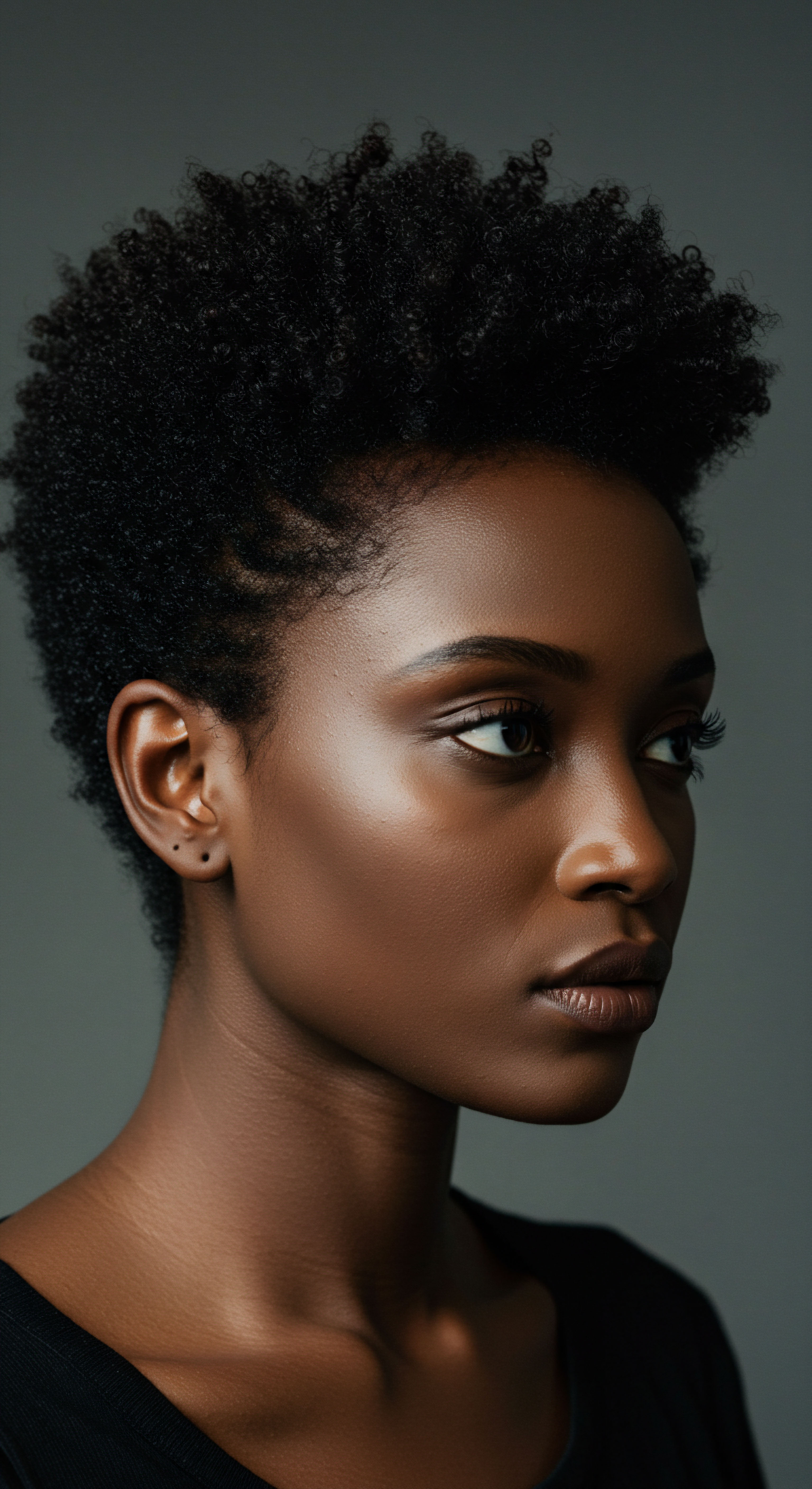
Beyond the Surface
The dialogue between humidity and the scalp’s microbial balance extends beyond surface-level observations. It delves into the intricate molecular communications between skin cells and microbes, and the immune responses triggered by these interactions. When the microbial balance shifts, the scalp’s immune system may react, leading to inflammation, itching, or discomfort. This is particularly relevant for individuals with textured hair, whose unique follicular structure and common styling practices can create specific challenges in maintaining an optimal scalp environment.
The collective wisdom of cultural hair practices, combined with contemporary scientific understanding, offers a powerful framework for maintaining scalp health in the face of environmental variables. It reminds us that care for our textured strands is deeply intertwined with care for the living ecosystem beneath them, a holistic approach that honors both heritage and biology.

Reflection
As we gently close this exploration of humidity’s quiet, yet profound, influence on the scalp’s microbial balance, we are reminded that the vitality of our textured hair is intimately linked to the unseen world beneath. It is a world where air and skin, science and tradition, dance in delicate equilibrium. Understanding this intricate relationship allows us to approach our hair care not as a series of disconnected tasks, but as a mindful engagement with a living system, adapting our practices with thoughtful awareness of the whispers of the atmosphere. May this understanding deepen our connection to our coils, kinks, and waves, allowing them to truly flourish.

References
- Li, H. Li, T. Wang, X. Xu, Z. Chen, L. Li, H. & Dong, Z. (2020). Relationship between scalp microbiota and humidity. Journal of Cosmetic Dermatology, 19(12), 3327-3333.
- Wang, X. Li, T. Li, H. Chen, L. Li, H. Xu, Z. & Dong, Z. (2020). The scalp mycobiome and its relationship with dandruff in different populations. Journal of Cosmetic Dermatology, 19(12), 3320-3326.
- Park, S. H. Park, J. W. & Kim, J. Y. (2017). Effect of humidity on skin barrier function and skin microbiome. Journal of Investigative Dermatology Symposium Proceedings, 18(1), S10-S14.
- Gan, S. Q. Lin, X. Y. Xu, L. & Hu, R. J. (2020). Influence of environmental factors on scalp microbiome. Journal of Dermatological Science, 99(1), 5-11.
- Garg, S. & Bhardwaj, N. (2017). The scalp microbiome ❉ A review. International Journal of Trichology, 9(4), 133-138.
- Xu, Z. Wang, X. Li, T. Li, H. Chen, L. Li, H. & Dong, Z. (2016). The scalp microbiome in Chinese individuals with and without dandruff. Journal of Dermatological Science, 83(3), 195-201.
- Grice, E. A. & Segre, J. A. (2011). The skin microbiome. Nature Reviews Microbiology, 9(4), 244-253.